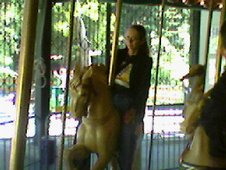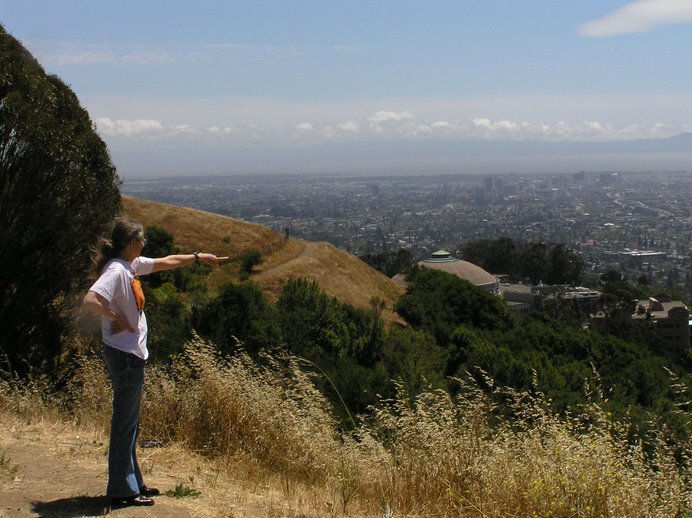Photos of ancient and damaged churches in Aleppo
These
photos that a friend in Aleppo just sent me are amazing! Everything seems so freaking OLD in Aleppo -- but in a good
way. We have NOTHING like this in America. Makes me want to win the
lottery and get on the first flight to Aleppo. I love old stuff. When I was a kid, I always dreamed of going to Egypt and living in a pyramid. Obviously that didn't happen.
Please pray for the brave Syrian army. Over 60,000 of its soldiers have been slaughtered and murdered while trying to defend Syria from ISIS and the United States.
____________________________________________________
1. At
the centre of the photo, there is the star of David formed out of the
window’s steel bars. The symbol was seen in so many historical areas. It
was a normal sign used by all faiths in decorations
and religious shield (mostly by Christians in this case) centuries
before the creation of the state of Israel. The building is on the
Little Cross square.
2. Epitaphs
inside the Armenian Forty Martyrs Church (AFMC). Some of them, like
this one, are written in three languages: Armenian, Arabic, and either
English or French.
3. Damage at the
top floor of the AFMC. Its main door was damaged and the opening was
filled with temporary blocks and cement, as shown in the previous
examples. The façade is dated back to 1840s,
with a renovation dated 1992.
4. The bell tower of the AFMC. 1912.
5. The bell tower of the Greek Orthodox Church (GOC) in the background, seen from the shared yard of the AFMC.
8 and 9. Some decorated architectural features from the 19th century in the AFMC.
11. Destruction to the AFMC gate and entrance seen from the Little Cross square.
12. The GOC’s domes and roofs are of the most damaged ones among the churches.
13. The alter and eastern niche in the GOC looks in good condition.
14. One of the copies of the original work that dates back to 1750. I didn’t have the chance to know if the original one was looted or just hidden in a safe place.
15. The Lady’s Lament Church, for Greek Orthodox Community (GOC)
16. Epitaphs and the internal gate of the GOC, dated 1852.
Christian Arabs and Armenians lived in it for centuries before it was destroyed recently in the war, mainly by the armed gangs supported by Turkey. It seems that their hatred to the Armenians is timeless! The ancient sector housed around 11-15 different Christian sects with their churches. Some of them are pretty small (like a group of 4 churches, mostly Armenians, sharing one court, smaller than one courthouse in a big traditional house).

















 \
\
Then my friend sent me these ones too. The titles and descriptions are also his:
From the ancient Christian sector of the city -- or to part of it, to whatever left of it. It’s called al-Jadeedah, or le-Jdaïdé (the New) for female, meaning the new part of the walled city of Aleppo, New neighbourhood, new sector, new Aleppo.... it was new when it had been built after the Mongol conqueror Timur (Tamerlane) sacked Aleppo in 1400AD.
People started coming back to the ruins of Aleppo little by little, and the Christians started building that sector to the north of the walled city, outside of it. Most of its buildings now belong to the ottoman era (16th-20th centuries), having beautiful traditional courthouses, schools, and churches.
From the ancient Christian sector of the city -- or to part of it, to whatever left of it. It’s called al-Jadeedah, or le-Jdaïdé (the New) for female, meaning the new part of the walled city of Aleppo, New neighbourhood, new sector, new Aleppo.... it was new when it had been built after the Mongol conqueror Timur (Tamerlane) sacked Aleppo in 1400AD.
People started coming back to the ruins of Aleppo little by little, and the Christians started building that sector to the north of the walled city, outside of it. Most of its buildings now belong to the ottoman era (16th-20th centuries), having beautiful traditional courthouses, schools, and churches.
Christian Arabs and Armenians lived in it for centuries before it was destroyed recently in the war, mainly by the armed gangs supported by Turkey. It seems that their hatred to the Armenians is timeless! The ancient sector housed around 11-15 different Christian sects with their churches. Some of them are pretty small (like a group of 4 churches, mostly Armenians, sharing one court, smaller than one courthouse in a big traditional house).
"The
Maronite Cathedral 1873-1923 (50 years building it). In front of it is a
statue of a seated Maronite bishop called Gabriel Germanos Farhāt
(1670-1732), whom the square is called after him (Farhat
Square). The left tower had a clock that chant every 15 min. part of
the Ave Maria tone. It had been restored recently by an Armenian clock
technician, who was among the crowd today, and received a great salutes
and greetings from everyone.
Signs of the damage on its façade.
Quote from the Bible: Wisdom of Yeshua son of
Sirach: 48: 4: (Elijah! Your miracles were marvelous! No one else can
boast of such deeds!).
Statue of Saint Elijah in side the Maronite Church - 1929
The second gate of the Maronite Cathedral (1873). It used to be called by then as the church of the Alive Saint Ilïās (Elijah).
Restoration
inside the Maronite Cathedral. Interesting that the engineer who is
working over there is a Muslim. The crisis united people from different
faiths against the terrorists. It divided them
somewhere else though. You can see the sky over here because the roof
was destroyed and collapsed completely.
Inside the roofless Maronite church - western entrance.
Decorated water well in side the Maronite church.
Interesting note said that the designer was European, he put his design
on a transparent sheet. But the local professional sculptor knows no
Latin
a century ago, so by mistake, he mirrored the Initial letters of the
Holy Name of Jesus (IHS) (Iesus Hominum Salvator) ! They left it as it
is.
Melkite Greek Catholic Church (MGCC), on Farhat Square.
Statue of Maximos III Michael Mażloum (1779-1855),
the patriarch of the MGCC (1833-1855). The engraves below show his
meeting with one of the Popes, and the other scene shows his meeting
with one
of the Ottoman sultans. The whole statue was built in memory of him a
century after his death. 1955.
The entrance of the MGCC, dated 1852, as a
restoration after it had been burned in an uprising in the mid 19th
century. The decoration above the door considered by some as the
Syrian/Alepian rococo
style.
Inside the MGCC.
Restoration of the roof and dome of the MGCC. The
altar is decorated with the same rococo style is hidden behind the
scaffolding.
Through the cobbled paths, arches and vaults
intervene the way. Parts of those houses are built above them. Damage at
the roofs and upper edges are clear in some photos. Those upper rooms
on the vaults
break the boredom and the long paths, and gave several spots with
shades and shadows among the sunny ways.
Properties (houses, shops, churches , and
restaurants) had been looted in the war, many original doors had been
damaged or broken. Temporarily owners had closed the opening of the
doors with stones
and cement till they fix and prepare the original doors.
This little square is formed out of two intersected
paths in X-like square, called the Little Cross, dates back to early
ottoman era (16th century). The amount of destruction is huge around
here,
where the Armenian churches and houses are. People were having tears in
their eyes, while others were cursing the terrorists and whom ever
supported them (mainly the Gulf states, Turkey, and the US).

Different details for each and every opening.









One of the big
traditional courthouses, from the mid 18th century, that had been turned
into a school in the last decades, and it’s housing some refugees
today.
The Īwān, which is the biggest vaulted niche located in each
traditional courtyard house on the southern direction. Some old
inscriptions inside it mentioned the Virgin Mary’s name, as a proof
that the owners were Christians.
More decorations that takes the Star of David style, although the
house originally was for Christian family. That was centuries before the
creation of the state of Israel.
Internal motifs on the wooden cornice that have paints of fruit dishes
... and poetry just below the ceiling.
Another house which was housing Institute Saint Basile, for one of the Catholic sects.
Fig tree in the courtyard!
Damages at the roofs of Basile institute.
I have to mention that
half or more of the Jdeïdé area was closed for people. It had been
heavily damaged and destroyed after been looted by the terrorists. The
civilian resistance is to stay and rebuild it again as it was and even
better. Arab Christians
and Armenians staying in the region are the best resistance to all the
the foreigners’ agendas to cleanse the Levant from minorities and
Christians.
I know that many had already left to Europe and other countries, but many of them are still living here and asking their families to come back and help in rebuilding their properties. It’s a long difficult struggle, but not an impossible one. 🤞🏻
I know that many had already left to Europe and other countries, but many of them are still living here and asking their families to come back and help in rebuilding their properties. It’s a long difficult struggle, but not an impossible one. 🤞🏻
_____________________________
Stop Wall Street and War Street from destroying our world. And while you're at it, please buy my books. https://www.amazon.com/Jane-Stillwater/e/B00IW6O1RM
 |
| Me, in Damascus, 2014 |










